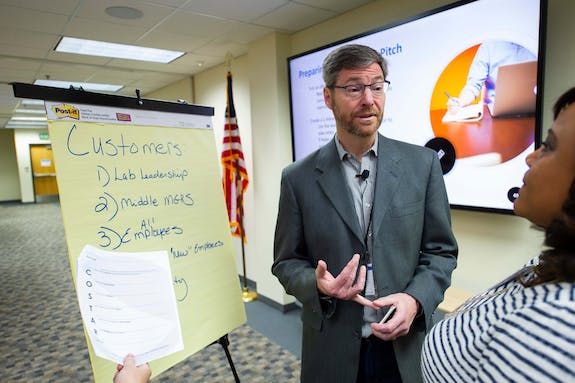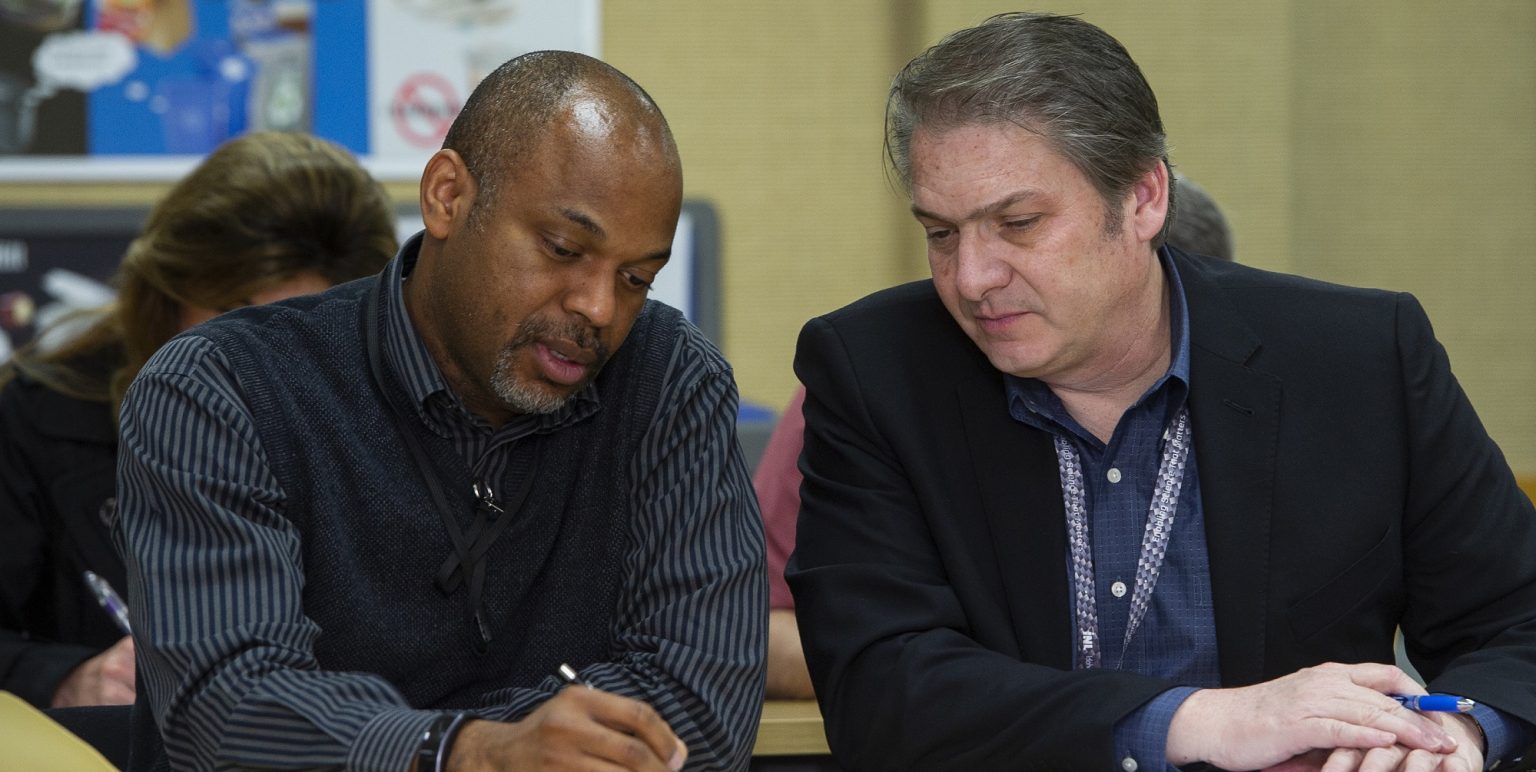Studies show that when you stage a house before selling it, the sale price is on average 17% higher than if the house hadn’t been staged. People are willing to pay that extra percentage to see the potential of the house, and to begin to imagine what it would look like in its best possible version. At INL, the CO*STAR program is giving a similar boost to new technological innovations.
CO*STAR was developed in Silicon Valley, but it has proven to be a useful business model worldwide. A team from Technology Deployment has been working for several months to implement CO*STAR at INL, and training sessions began about six months ago.
But what is CO*STAR, exactly? CO*STAR is an acronym that stands for Customer, Opportunity, Solution, Team, Advantage, Results.
“We really wanted to try to drive greater impact from our investments and research,” said Jason Stolworthy, Technology Deployment director. “The methodology to do that is to make sure that where we innovate is closely connected with real, validated customer needs; to make sure that the idea has the appropriate opportunity size and the right team behind it; and that the advantages of the technology are well-vetted and compared against existing solutions.”
CO*STAR propositions require innovators to answer six fundamental questions about their technology, according to the six letters of the acronym. Who is the customer, and what is their unmet need? What is the opportunity? What technology or program is being provided as a solution? Who needs to be on the team? What is the competitive advantage? What results will you achieve?
“This is one of the best ways to infuse a positive development culture throughout the lab,” said Jim Keating, who leads CO*STAR implementation and training sessions. “Something like CO*STAR can raise the bar for the quality of our deliverables. This can enhance not just research, but all aspects of what we’re doing at the lab.”
The overall goal of CO*STAR is to ensure that every product developed at INL is the best possible version of itself. It challenges inventors and researchers to think about the long-term impact of their products and the way in which these technologies can dramatically change the marketplace and provide new ideas.
So far, INL is the only DOE lab participating in the program, but with INL’s support, DOE hopes to encourage other national labs to be similarly forward-thinking in their efforts to elevate impact.

“This is very much a holistic way of looking at an idea,” Keating said. “In a national lab setting, the default position is to provide a technical solution, but not to provide much context around that solution. Solutions out of context don’t really have as much impact, so we’re actually giving people the methodology to think through these other elements that are very relevant, because in the real world, there is context. CO*STAR gets people to think through a problem in a more holistic way, and the end result is that the solution is much better.”
A number of hosted workshops have been held to help employees learn the CO*STAR methodology and prepare their ideas for the best marketplace success. So far, about 175 employees have completed these sessions.
The sessions involve introducing employees to the CO*STAR method, followed by a Rapid Idea Improvement Session (RIIS), which allows the participants to engage in constructive feedback sessions with each other to better develop their ideas. The researchers pitch their ideas to other attendees undergoing the CO*STAR and RIIS programs. Everyone in the room has a specific role: Some of the researchers act as the idea’s biggest champion, while some give pointers on how to improve. Others act as customers and sponsors for the product. After a ten-minute pitch, these researchers – fulfilling their specific roles – give constructive feedback to further develop the idea.
“I was really surprised at how well-received the program was. We had to turn away people from our training sessions because they were overfilled, and the training sessions received very high scores from participants,” Stolworthy said. “Most of the feedback was that this was the type of information researchers wished they’d had earlier in their careers, because it was the type of thing they weren’t taught in their engineering and science classes, but it’s what they really need to know. We were surprised at how much the researchers had the desire and the need to understand how to pitch their ideas, as well as how to make a good, solid business case.”
Right now, the program’s primary focus is establishing a common language for researchers and innovators at INL to use when evaluating and pitching new ideas. These training sessions help implement CO*STAR culture throughout the lab and ensure that all researchers are considering the six elements of CO*STAR when developing new innovations. CO*STAR makes it easier for everyone to agree upon what a valuable idea is, improve the idea and communicate it using a common language. This enables staff to spend time on valuable ideas and impart the value of those ideas more easily, making each person more successful.
Zach Tudor, National & Homeland Security associate laboratory director and a champion of the CO*STAR initiative, has been a longtime proponent of developing value propositions for world-class innovations. Once an idea has been conceived, the value of that idea must be communicated in a way that resonates with customers.
Implementing innovation as a system is impactful for the entire lab. “When leadership asks employees to elevate impact, it’s our job to provide the resources and tools to do so” Tudor said. “The CO*STAR method will improve an individual’s abilities to develop value propositions, and it is even more effective when used collectively, throughout an organization. Collaboration and innovation are enabled by the shared languages and ideas that come from picking one standard and sticking to it.”
Keating and Stolworthy have observed that overall, the feedback sessions have provided very positive, nurturing environments. “Early indicators are that people are generally thinking more like entrepreneurs and businesspeople and bringing greater value to INL in terms of the potential impact of their efforts,” Stolworthy said. “What we anticipate in the future is an increase in the number of breakthrough ideas, versus incremental innovations and improvements. We hope to move toward larger ideas with larger impact.”
“We definitely want to demonstrate success here and show that INL’s very forward-thinking. This is one thing we can do to elevate impact,” Keating added. “By working better with each other, we can make sure that we are solving real problems.”







